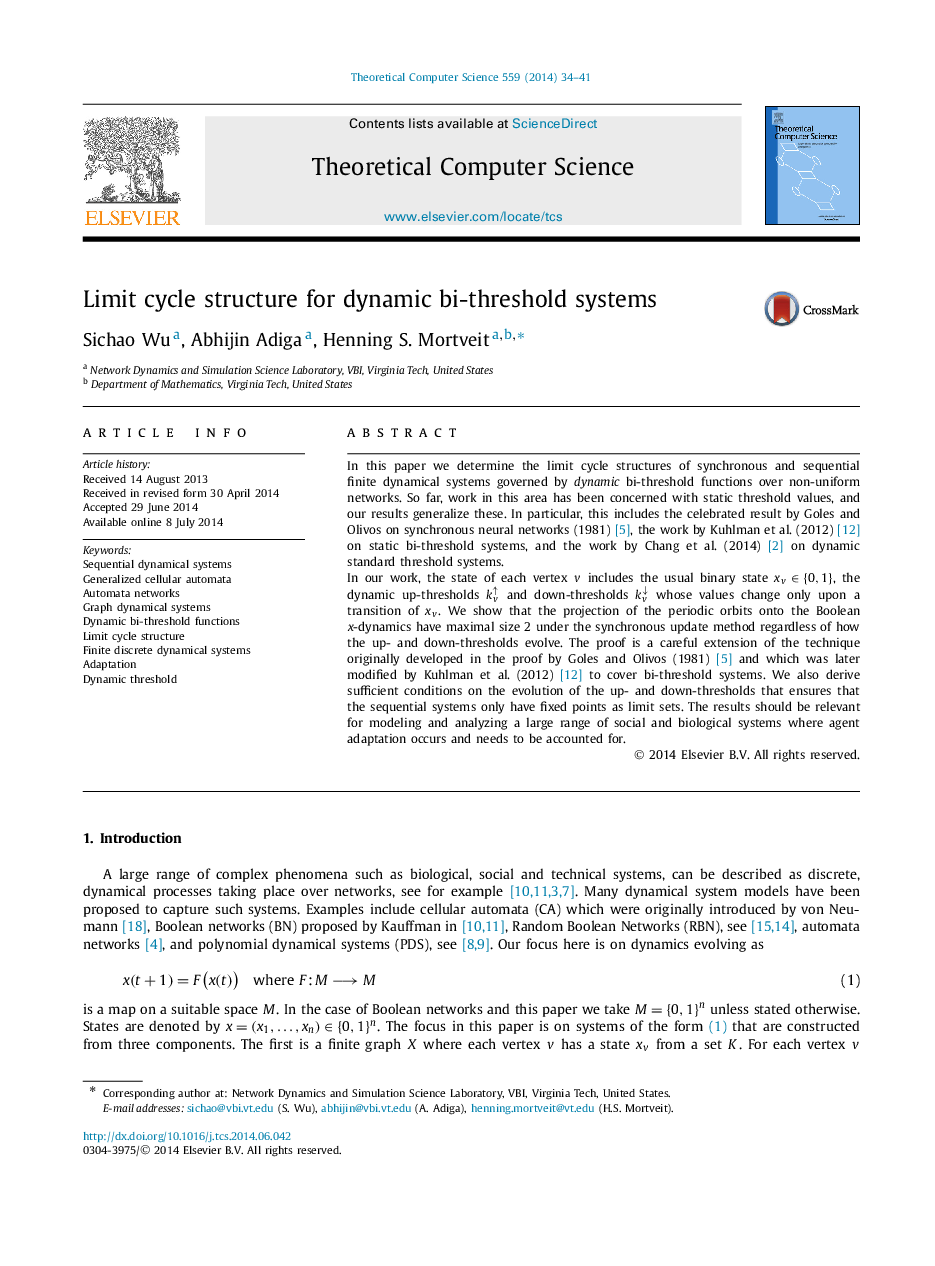| کد مقاله | کد نشریه | سال انتشار | مقاله انگلیسی | نسخه تمام متن |
|---|---|---|---|---|
| 438124 | 690229 | 2014 | 8 صفحه PDF | دانلود رایگان |
In this paper we determine the limit cycle structures of synchronous and sequential finite dynamical systems governed by dynamic bi-threshold functions over non-uniform networks. So far, work in this area has been concerned with static threshold values, and our results generalize these. In particular, this includes the celebrated result by Goles and Olivos on synchronous neural networks (1981) [5], the work by Kuhlman et al. (2012) [12] on static bi-threshold systems, and the work by Chang et al. (2014) [2] on dynamic standard threshold systems.In our work, the state of each vertex v includes the usual binary state xv∈{0,1}xv∈{0,1}, the dynamic up-thresholds kv↑ and down-thresholds kv↓ whose values change only upon a transition of xvxv. We show that the projection of the periodic orbits onto the Boolean x-dynamics have maximal size 2 under the synchronous update method regardless of how the up- and down-thresholds evolve. The proof is a careful extension of the technique originally developed in the proof by Goles and Olivos (1981) [5] and which was later modified by Kuhlman et al. (2012) [12] to cover bi-threshold systems. We also derive sufficient conditions on the evolution of the up- and down-thresholds that ensures that the sequential systems only have fixed points as limit sets. The results should be relevant for modeling and analyzing a large range of social and biological systems where agent adaptation occurs and needs to be accounted for.
Journal: Theoretical Computer Science - Volume 559, 20 November 2014, Pages 34–41
